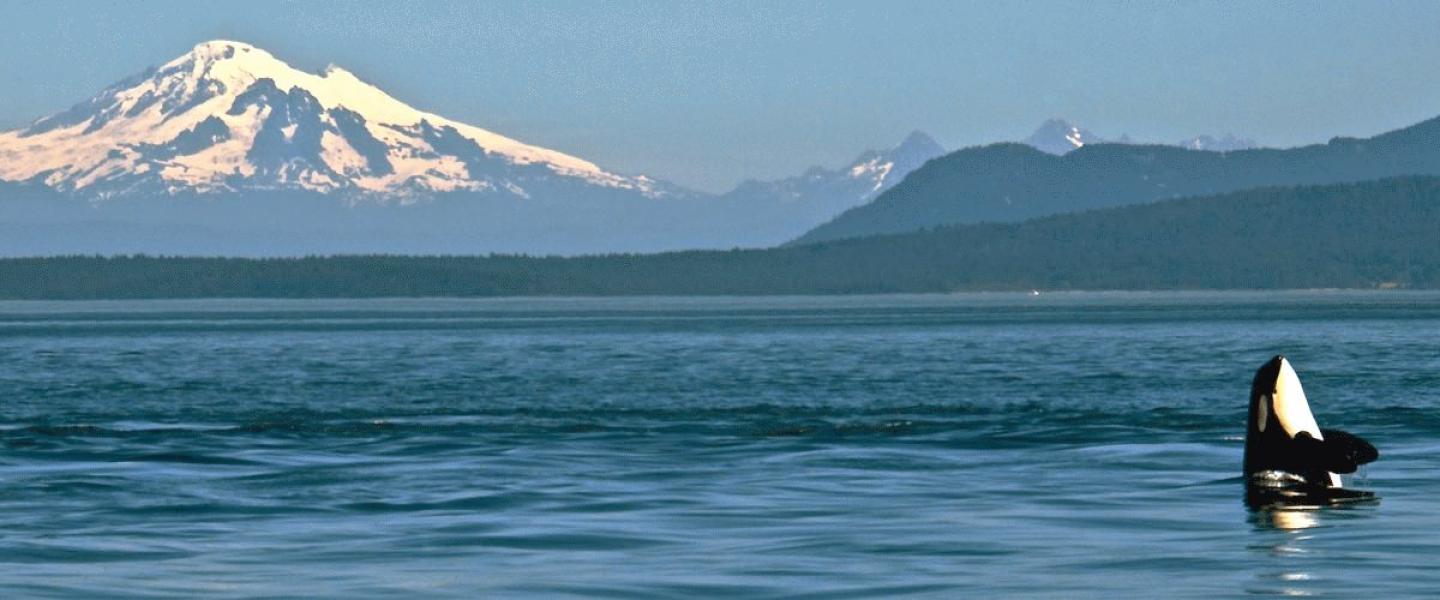
Haleigh | M/V Osprey | June 8, 2022 | 12:30 pm
Today’s Classic Whale and Wildlife excursion began like most days out on the water, a few reports guiding our direction but no guarantees for what wildlife we’d find. The early-on reports directed us north up San Juan Channel towards feeding grounds known to host feeding Humpback Whales. As we made our way along Orcas Island, through President's Channel and past Waldron Island, a report of Bigg’s Killer Whales came in only 15 minutes from our location! Filled with excitement, we chugged along northbound where we caught our first glimpses of a family of Bigg’s Killer Whales.
Bigg’s Killer Whales are an ecotype most notably distinguished for their strict appetite of marine mammals. Within the Salish Sea, they are predominantly hunting Harbor Seals, occasionally filling up on Harbor Porpoises or a Minke Whale. They travel as small family groups silently through the water to sneak up on their acoustically-aware prey and work as a unit to hunt. Despite needing ~300lbs of food per day per whale, it’s not often you get to see the hunting in action.
An alignment of timing and luck placed us in the right place at the right time to witness the take down of a Harbor Seal by the Killer Whale family, T123’s, led by mom, Sidney (T123, 1985). She was accompanied by her three offspring Stanley (T123A, 2000), Lucky (T123C, 2012), and Darcy (T123D, 2018). They rounded the east side of Patos island, disappeared for a moment, and rapidly reappeared at the surface rounding one another and quickly diving back down. Splashing and porpoising behavior followed by a Harbor Seal looking for an escape led to a quick takedown. What came to follow was an act of celebration, mostly by the youngest two calves, Lucky and Darcy, who flopped repeatedly up and out of the water, spy hopped a few times, and even did a headstand, tail-wag for us!
The healthy, stable population of Harbor Seals in the Salish Sea has brought in more and more Bigg’s Killer Whales over the last decade. The most important factor for the health of any wildlife population is having a stable, uncontaminated food source. We’ve seen how the decline of salmon has led to a rapid decline in our Southern Resident Killer Whale population, and the impact pesticides had on our Bald Eagle populations around the world. While Bald Eagles made a recovery, we can attribute that to conservation work and political action. Our Southern Resident Killer Whales face a different fate and salmon continues to decrease with lacking breeding grounds within rivers all over the PNW and extending into Canada, Montana, Idaho, and further. We can all act in some way to advocate for these critically endangered whales and hold gratitude for the Bigg’s Killer Whales and other wildlife we’re able to witness.